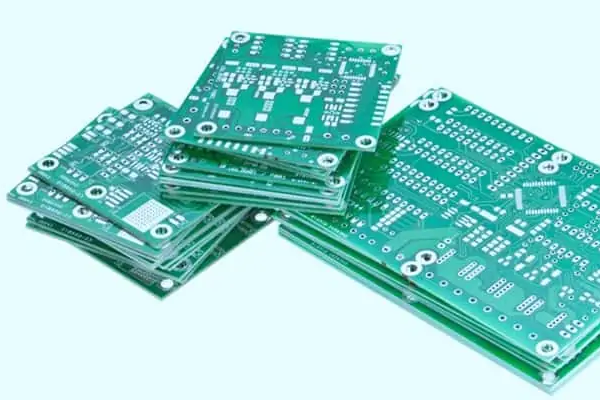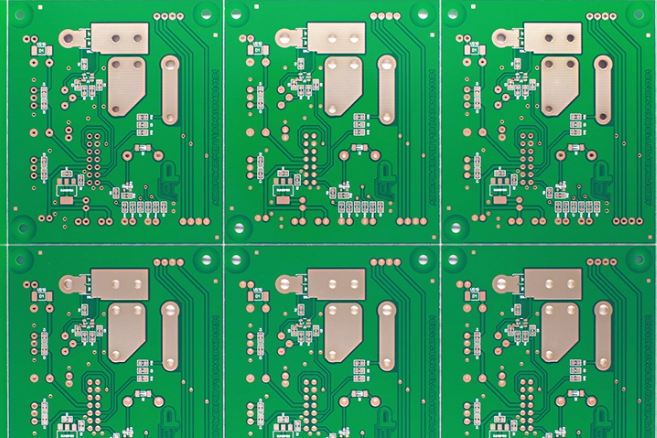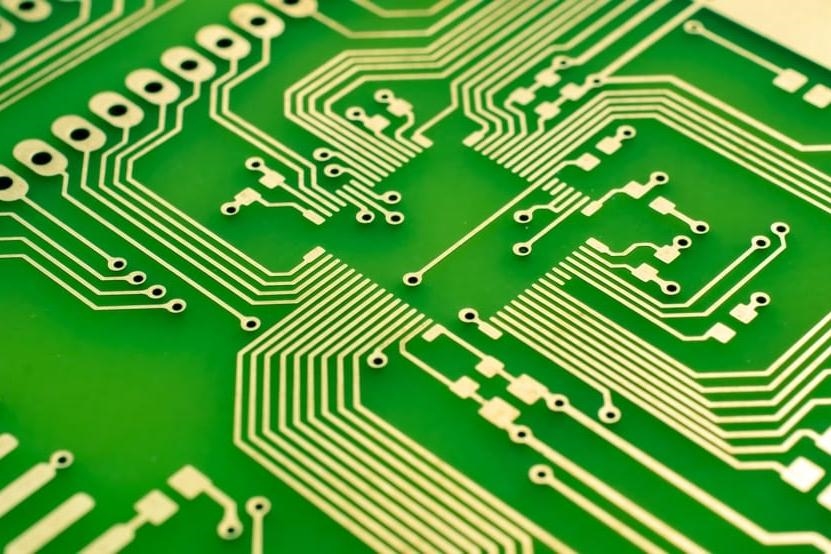Choosing the right materials for printed circuit boards (PCBs) in Electronic Control Units (ECUs) is critical for ensuring optimal performance, reliability, and efficiency. Whether you're designing ECUs for automotive systems, industrial controls, or advanced electronics, the substrate material you select can significantly influence signal integrity, thermal management, and overall durability. In this comprehensive guide, we'll explore how high frequency PCB materials for ECU, thermal conductivity of PCB materials, and dielectric constant PCB materials play a pivotal role in performance. We'll also provide actionable insights on choosing the right PCB substrate for ECU applications to help engineers and designers make informed decisions.
Why PCB Material Selection Matters for ECU Performance
ECUs are the brain of modern electronic systems, managing everything from engine performance in vehicles to complex industrial automation. These units often operate in harsh environments with high temperatures, vibrations, and electromagnetic interference (EMI). The PCB material used in an ECU directly impacts how well it handles these challenges. A poor choice of substrate can lead to signal loss, overheating, or even system failure, while the right material can enhance performance and longevity.
In this blog, we’ll break down the key factors to consider when selecting PCB materials for ECUs, focusing on high-frequency performance, thermal management, and dielectric properties. Let’s dive into the details to understand how each aspect affects ECU functionality.
Understanding High Frequency PCB Materials for ECU Applications
Modern ECUs often process high-frequency signals, especially in automotive systems where radar, sensors, and communication modules operate at frequencies above 1 GHz. At these frequencies, signal integrity becomes a major concern. The wrong PCB material can cause signal loss, crosstalk, or delays, which can compromise the ECU’s ability to process data accurately.
High frequency PCB materials for ECU are designed to minimize these issues. Materials with low dielectric loss (also known as dissipation factor, Df) and stable dielectric constant (Dk) are ideal. For instance, materials like polytetrafluoroethylene (PTFE)-based laminates often have a Dk around 2.2 to 3.0 and a Df below 0.002, ensuring minimal signal distortion at high frequencies. These materials are particularly useful in ECUs for advanced driver-assistance systems (ADAS) where precise signal timing is critical.
Another benefit of high-frequency materials is their ability to reduce EMI, a common issue in densely packed ECU designs. By selecting a substrate with controlled impedance—often in the range of 50 ohms for high-speed digital signals—you can ensure better performance and reliability.
When choosing a material for high-frequency applications, consider the specific frequency range your ECU will operate in. For example, if your system operates at 5 GHz, ensure the material’s properties remain stable at that frequency. This prevents unexpected signal degradation during operation.
Choosing the Right PCB Substrate for ECU: Key Considerations
Choosing the right PCB substrate for ECU involves balancing multiple factors such as cost, performance, and environmental conditions. Here are the primary considerations to keep in mind:
1. Application Requirements
Different ECUs have unique needs. For instance, an ECU in an electric vehicle might prioritize thermal management due to high power loads, while a communication ECU may focus on signal integrity for high-speed data transfer. Define the primary function of your ECU and match the substrate to those needs.
2. Environmental Conditions
ECUs often operate in extreme conditions, such as temperatures ranging from -40°C to 125°C in automotive applications. The substrate must have a low coefficient of thermal expansion (CTE) to avoid cracking or delamination. Materials with a CTE below 20 ppm/°C are often preferred for such environments.
3. Cost vs. Performance
High-performance materials like ceramics or specialized laminates offer excellent properties but come at a higher cost. Standard materials like FR-4, with a Dk of around 4.5 and moderate thermal conductivity of 0.3 W/m·K, might suffice for less demanding applications. Evaluate whether the performance gains justify the added expense.
By carefully assessing these factors, you can narrow down the best substrate for your ECU design. Always test the material under real-world conditions to ensure it meets your expectations.
Thermal Conductivity of PCB Materials: Managing Heat in ECUs
Heat dissipation is a critical challenge in ECU design. As components become smaller and power densities increase, managing heat becomes essential to prevent overheating and ensure long-term reliability. The thermal conductivity of PCB materials plays a direct role in how effectively heat is transferred away from critical components.
Thermal conductivity is measured in watts per meter-kelvin (W/m·K). Standard FR-4 materials have a low thermal conductivity of about 0.3 W/m·K, making them less ideal for high-power ECUs. In contrast, metal core PCBs (MCPCBs) or aluminum-backed substrates can achieve thermal conductivity values of 1 to 3 W/m·K or higher, making them better suited for heat-intensive applications.
For example, in an ECU controlling a high-power motor, a metal core substrate can help dissipate heat from power transistors, keeping junction temperatures within safe limits (typically below 150°C). Ceramic substrates, with thermal conductivity values ranging from 20 to 30 W/m·K, offer even better performance but are often reserved for specialized applications due to their cost.
Beyond material selection, design techniques like adding thermal vias or heat sinks can enhance heat dissipation. However, starting with a substrate that has good thermal conductivity lays a strong foundation for effective thermal management.
Dielectric Constant PCB Materials: Impact on Signal Speed and Integrity
The dielectric constant PCB materials (Dk) determines how much electrical energy a material can store and how fast signals travel through it. A lower Dk value means faster signal propagation, which is crucial for high-speed ECUs. For instance, FR-4 has a Dk of approximately 4.5, resulting in slower signal speeds compared to PTFE-based materials with a Dk of 2.2.
In practical terms, a lower dielectric constant reduces signal delay, which is vital for ECUs handling real-time data, such as those in autonomous vehicles. A signal delay of even a few nanoseconds can affect system response times, leading to potential safety issues.
Additionally, the dielectric constant affects impedance matching. For high-frequency signals, maintaining a consistent impedance (often 50 ohms) across the PCB is essential to avoid reflections and signal loss. Materials with a stable Dk over a wide frequency range help achieve this consistency.
When selecting a material, check the manufacturer’s data sheet for Dk values at the frequencies relevant to your ECU. Also, consider the material’s dielectric loss tangent (Df), as a high Df can cause energy loss, especially at frequencies above 1 GHz.
Popular PCB Materials for ECU Applications
Let’s take a closer look at some common PCB materials used in ECU designs, highlighting their strengths and ideal use cases:
1. FR-4
FR-4 is the most widely used PCB material due to its affordability and versatility. With a thermal conductivity of 0.3 W/m·K and a Dk of 4.5, it’s suitable for low-to-mid frequency ECUs with moderate thermal demands. However, it may not be ideal for high-frequency or high-power applications.
2. PTFE-Based Laminates
These materials are excellent for high frequency PCB materials for ECU designs. With a low Dk (around 2.2) and minimal dielectric loss, they ensure excellent signal integrity at frequencies up to 10 GHz or higher. They are commonly used in communication and radar ECUs.
3. Metal Core PCBs (MCPCBs)
MCPCBs are designed for high-power ECUs where heat dissipation is a priority. Their thermal conductivity (1-3 W/m·K or more) makes them ideal for managing heat in compact designs, though they are less suited for high-frequency signals due to higher dielectric constants.
4. Ceramic Substrates
Ceramics offer superior thermal conductivity (20-30 W/m·K) and stability under extreme conditions. They are often used in aerospace or military ECUs where reliability is paramount, though their high cost limits widespread use.
By understanding the properties of these materials, you can make an informed choice based on your ECU’s specific requirements.
Best Practices for Selecting PCB Materials for ECUs
To wrap up, here are some actionable tips for selecting the right PCB material for your ECU project:
- Prioritize Signal Integrity: For high-frequency applications, opt for materials with low Dk and Df to minimize signal loss and ensure accurate data transmission.
- Focus on Thermal Management: Choose substrates with high thermal conductivity for power-intensive ECUs to prevent overheating and extend component life.
- Consider Environmental Factors: Ensure the material can withstand the operating conditions of your ECU, including temperature extremes and humidity.
- Balance Cost and Performance: While premium materials offer better properties, evaluate if the benefits align with your budget and application needs.
- Test Under Real Conditions: Simulate the ECU’s operating environment during the design phase to validate material performance before mass production.
Conclusion: Optimizing ECU Performance Through Material Selection
The choice of PCB material is a foundational decision that directly impacts the performance, reliability, and efficiency of an ECU. By understanding the roles of high frequency PCB materials for ECU, thermal conductivity of PCB materials, and dielectric constant PCB materials, you can make informed choices that enhance your design. Whether you’re managing high-speed signals or tackling thermal challenges, choosing the right PCB substrate for ECU applications is key to success.
At ALLPCB, we’re committed to supporting engineers and designers with high-quality materials and manufacturing solutions tailored to ECU needs. With the right material and design approach, you can build ECUs that perform reliably even in the most demanding conditions. Take the time to evaluate your options, test your designs, and select a substrate that aligns with your goals for performance and durability.








